Birthday Treat for Holly – UPDATE April 9, 2014
 Sharon gives Holly a bottleAt 9 AM CDT, Lynn turned 75. We celebrated by giving Holly a bottle. We knew she was used to having a bottle as a cub. Would she remember? Yes. Immediately.
Sharon gives Holly a bottleAt 9 AM CDT, Lynn turned 75. We celebrated by giving Holly a bottle. We knew she was used to having a bottle as a cub. Would she remember? Yes. Immediately.
From Holly’s reaction to Lynn in her den a couple days ago, we knew she needed special treatment to become comfortable with the staff, Lynn, Sue, Bear Educators, veterinarians, etc. Today, we made up a batch of the formula that was so helpful to Hope—a formula recommended by nutrition and lactation experts. Holly loved it. She cried when it was gone.
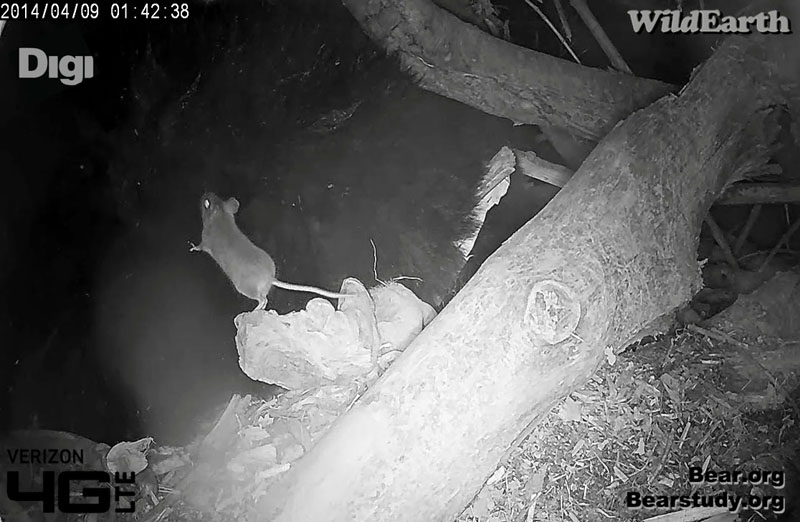 Juliet has a visitor!The purpose? To bond with Holly. Sharon Herrell gave the first bottle. We now want to go to many feedings of small amounts throughout the day. Holly will be the most pampered bear that ever lived. As different people give her bottles, she will get to know the office staff, the sales associates, the Bear Educators, and even the veterinarian who is coming tomorrow (rather than today).
Juliet has a visitor!The purpose? To bond with Holly. Sharon Herrell gave the first bottle. We now want to go to many feedings of small amounts throughout the day. Holly will be the most pampered bear that ever lived. As different people give her bottles, she will get to know the office staff, the sales associates, the Bear Educators, and even the veterinarian who is coming tomorrow (rather than today).
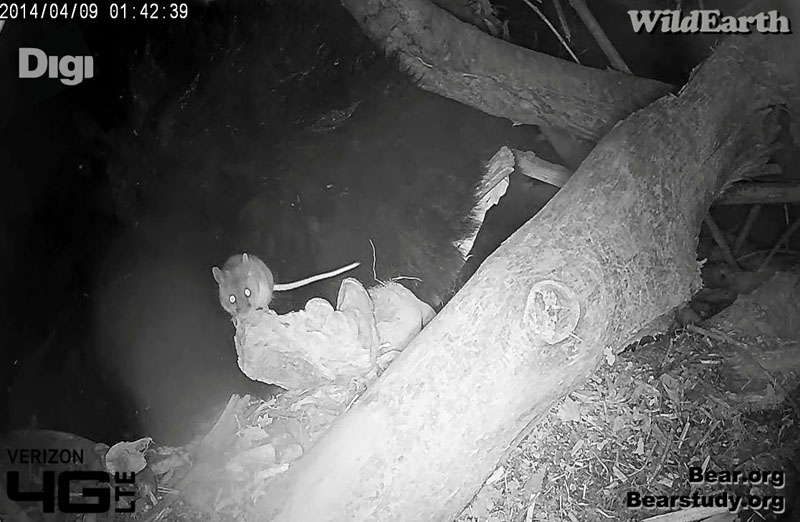 Mouse decides not to climbWe’re excited that this yearling is experienced at suckling bottles—which gives us on opportunity to bond with her. This should help to develop the mutual trust we need to work with her. Her attitude will change from regarding us as strangers who didn’t raise her to people she trusts. We are all looking forward to the interactions and security this will bring to Holly and to the joy of accompanying her as she explores the enclosure.
Mouse decides not to climbWe’re excited that this yearling is experienced at suckling bottles—which gives us on opportunity to bond with her. This should help to develop the mutual trust we need to work with her. Her attitude will change from regarding us as strangers who didn’t raise her to people she trusts. We are all looking forward to the interactions and security this will bring to Holly and to the joy of accompanying her as she explores the enclosure.
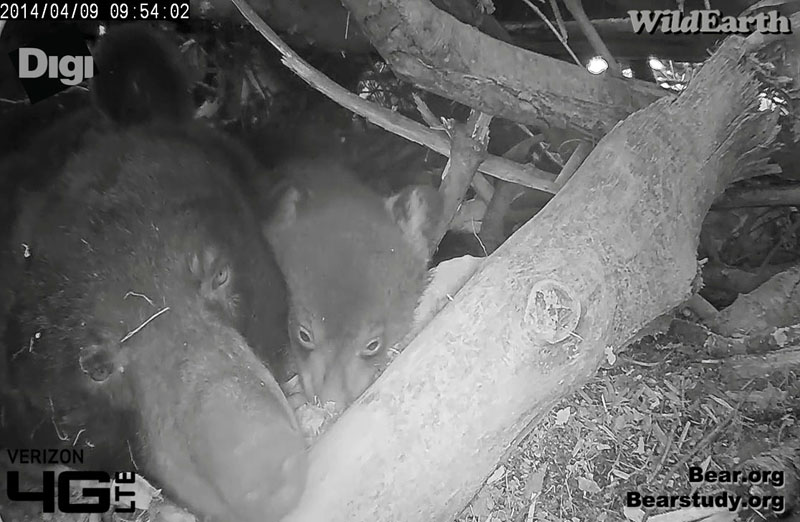 Juliet and Cub #2Sometimes you have to try something new to learn something new. Giving a bottle to a yearling that was raised on a bottle should connect to the good feelings she felt as a cub. We will all follow what actually happens.
Juliet and Cub #2Sometimes you have to try something new to learn something new. Giving a bottle to a yearling that was raised on a bottle should connect to the good feelings she felt as a cub. We will all follow what actually happens.
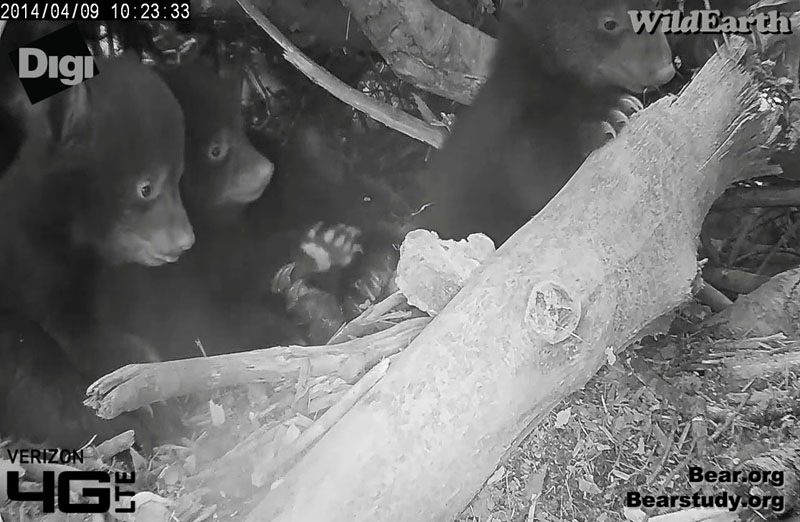 Juliet's 3 sonsWe’re happy she came to us as an unusually large cub with ample fat reserves (84 pounds). That served her well in this unusually cold winter. She likely weighs between 55 and 60 pounds now—about twice what many wild yearlings weigh at this time. References on that for this area include:
Juliet's 3 sonsWe’re happy she came to us as an unusually large cub with ample fat reserves (84 pounds). That served her well in this unusually cold winter. She likely weighs between 55 and 60 pounds now—about twice what many wild yearlings weigh at this time. References on that for this area include:
 Cub #1The top of page 438 in Rogers, L. L. 1976. Effects of mast and berry crop failures on survival, growth, and reproductive success of black bears in northeastern Minnesota. Trans. North American Wildlife and Natural Resources Conf. 41:431-438.
Cub #1The top of page 438 in Rogers, L. L. 1976. Effects of mast and berry crop failures on survival, growth, and reproductive success of black bears in northeastern Minnesota. Trans. North American Wildlife and Natural Resources Conf. 41:431-438.
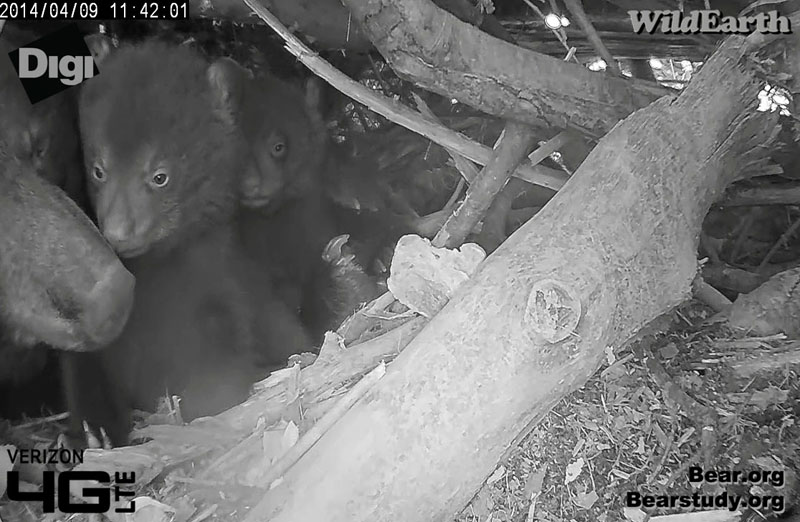 Cub #1 and Cub #2The last paragraph on page 52 of Rogers, L. L. 1987. Effects of food supply and kinship on social behavior, movements, and population dynamics of black bears in northeastern Minnesota Wildlife Monograph 97. 72 pages.
Cub #1 and Cub #2The last paragraph on page 52 of Rogers, L. L. 1987. Effects of food supply and kinship on social behavior, movements, and population dynamics of black bears in northeastern Minnesota Wildlife Monograph 97. 72 pages.
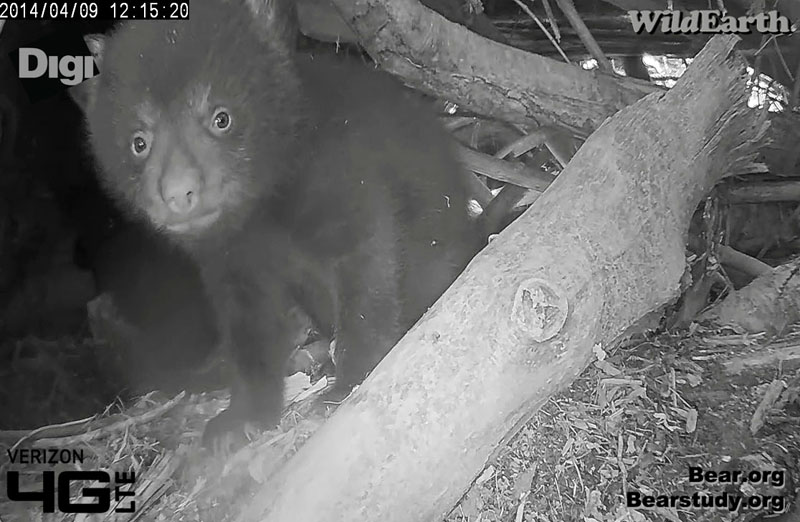 Cub #1The chart on page 98 in Rogers, L. L. 1993. The role of habitat quality in the natural regulation of black bear populations. Proc. 4th Western Black Bear Workshop: 95-102. Yosemite National Park, California. Technical Report NPS/NRWR/NRTR-93/12.
Cub #1The chart on page 98 in Rogers, L. L. 1993. The role of habitat quality in the natural regulation of black bear populations. Proc. 4th Western Black Bear Workshop: 95-102. Yosemite National Park, California. Technical Report NPS/NRWR/NRTR-93/12.
 Cub #3 and Cub #1At this moment (6:45 PM), we got a call that Holly suckled her bottle rather than slurping it, making progress. She suckled trustingly with her eyes closed. She was comfortable with the staff person but became wary and defensive toward a stranger who appeared.
Cub #3 and Cub #1At this moment (6:45 PM), we got a call that Holly suckled her bottle rather than slurping it, making progress. She suckled trustingly with her eyes closed. She was comfortable with the staff person but became wary and defensive toward a stranger who appeared.
Tomorrow, our veterinarian will sedate and examine Holly, remove her eartags, and take a blood sample.
 Cub #2, Cub #3, and Cub #1As a birthday surprise, a Lily Fan funded and donated the Woodland Caribou ($2,800), leaving nothing on the taxidermy list to donate until more taxidermy and prices become available for birds and small mammals. Many thanks for this start!! But a treat even beyond money was seeing the comments of support from so many of you and even on the Get Bear Smart page from Whistler, BC. It feels like family. Thank you! Together we will make this happen.
Cub #2, Cub #3, and Cub #1As a birthday surprise, a Lily Fan funded and donated the Woodland Caribou ($2,800), leaving nothing on the taxidermy list to donate until more taxidermy and prices become available for birds and small mammals. Many thanks for this start!! But a treat even beyond money was seeing the comments of support from so many of you and even on the Get Bear Smart page from Whistler, BC. It feels like family. Thank you! Together we will make this happen.
Thank you for all you do.
—Lynn Rogers and Sue Mansfield, Biologists, Wildlife Research Institute and North American Bear Center
